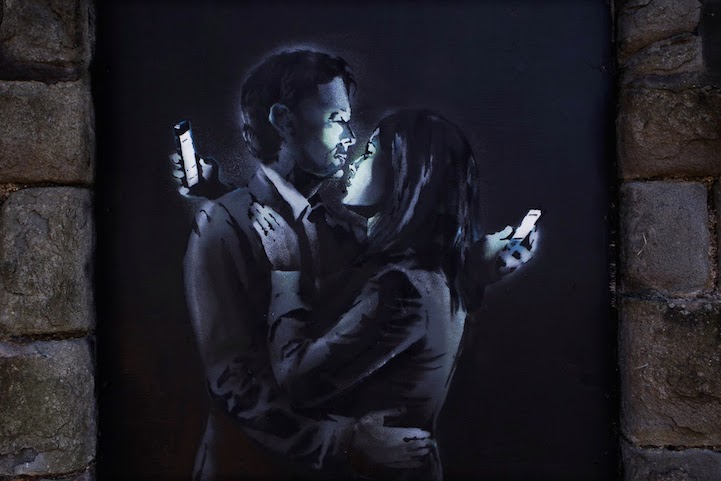Who is Banksy? It’s the question that both matters and doesn’t, and is permanently fused to the artist and his work.
Banksy is a British artist, from the city of Bristol. He first came to attention within street art circles in the ‘90s, and gradually entered mainstream public consciousness in the ‘00s. His work has always made a statement, whether political, economic, social or about the art itself, and this, coupled with his anonymity, built the legend that is Banksy.
But how did Banksy grow from unknown street artist, to a cultural phenomenon so famous that people literally cut the walls out of buildings just to possess a piece of his work?
In a way, Banksy appeared on the street art scene at just the right time, as the ‘90s saw it tip over from public nuisance to recognised art form. However, in another way, Banksy was one of the main causes of this change. His famous stencil art brought a kind of familiarity to street art—the animals and people of his early work had an almost whimsical feel to them, while also having something to say, which probably caused them to be more accepted than the more confronting work of the time.
In around 2003 Banksy moved to London, which is where his art really started to take off. It’s also where he let his life imitate art, performing stunts such as hanging his own paintings in the Tate Britain, the Met and the Louvre.
However, it was in 2005 that the name Banksy became well-known outside the hip street art circles. In August of that year he painted a series of images on the concrete wall that divides the West Bank in Israel, with his trademark brand of whimsy with a poignant message.
With this, the world in general started talking about Banksy. Who was he? What statement was he trying to make? When Banksy held an exhibition in Los Angeles, attended by the likes of Brad Pitt, and later sold a phone booth sculpture at a Sotheby’s charity event for $605,000, this only cemented his cultural relevance.
His biggest moment in mainstream awareness, however, came with the 2010 documentary, Exit Through the Gift Shop. Like Banksy, and like street art itself, the film was irreverent, and had some asking if it was faked, if Banksy himself was just the result of a long con.
Which brings us back to the ever-present issue of anonymity, never far from a Banksy conversation.
Without a name or a face (though in the past few years there have been several photos and identity reveals, all denied by the artist) there will always be a question of WHO that overshadows the WHAT and the WHY.
However, it is Banksy’s anonymity that allows him to remain an enigma, despite his success. His work is some of the most recognisable, in-demand art in the world. His street pieces have been cut out of walls and sold at private auction for insane amounts of money. Others are covered and fiercely protected by the neighbourhoods they adorn. In London you can buy photos of them at markets, framed, as if they’re prints.
For a known, named artist, this kind of recognition would undermine the message. What was once subversive would quickly become mainstream, commercial. It would lose its power.
Yet Banksy’s whole existence as an artist is subversive. He refuses to out himself, to take advantage of what the fame would bring. He has his art available for free download on his site. He remains underground, even while he is one of the most famous living artists.
This is the true power of Banksy—he is passionate about his art, he is passionate about his message, and he remains authentic to both.

